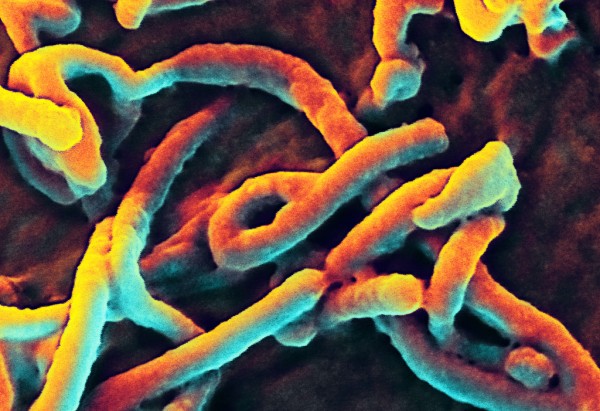By Dane Lorica, | November 05, 2016

A mutation of Ebola virus has made it easily transmittable to human cells. (Flickr)
In December 2013, Ebola virus alarmingly spread in the West African region with outbreaks in Liberia, Guinea, and Sierra Leone. The epidemic that threatened the whole world infected over 28,000 people before the authorities could bring it under control.
The uncontrolled movement of the virus from rural areas to major cities was aggravated by poor public health infrastructure and other factors in the environment.
Like Us on Facebook
Two papers recently released intriguing arguments stating that months after Ebola became an epidemic, it mutated to become more suited to infect humans than fruit bat species which serve as its natural host.
Pardis Sabeti of the Harvard University said: "the virus has never had this many human-to-human transmissions before, and there are a lot of mutations happening." The evolutionary geneticist and co-author of one of the research paper emphasized that the findings of her team are only "circumstantial," but the second published research presents "compelling evidence" that supports the preference of the virus for human cells after it has mutated.
The results "raise the possibility that this mutation contributed directly to greater transmission and thus to the severity of the outbreak." The said mutation was also associated with the increased mortality.
The team led by Jeremy Luban performed sequencing of samples collected from West African patients in 1489. Some three months after the first Ebola epidemic occurred, the researchers found out that the sequences split into two lineages. The first one showed changes in the surface protein of the virus that allow binding to cells. Luban described the mutant as "completely supplanted the ancestral virus."
Since the researchers do not have access to biosafety level 4 of the laboratory for testing the capability of the mutated virus in spreading, they created a harmless "pseudotyped" Ebola instead. In a report published in the journal Cell, it was revealed that mutant cells are better in infecting human cells compared to the ancestral pseudotype. Further, the mutant virus showed a preference for primate cells than carnivores and rodents.
Jonathan Ball of the University of Nottingham and Etienne Simon-Loriere of the Pasteur Institute in Paris released a second paper showing similar conclusions. The authors added that the spread of the disease in urban areas "led to larger chains of transmission."
Both studies recommend that to avoid another epidemic, preventing the spread of Ebola and disrupting its transmission chains are the primary steps to be taken.
-
Use of Coronavirus Pandemic Drones Raises Privacy Concerns: Drones Spread Fear, Local Officials Say

-
Coronavirus Hampers The Delivery Of Lockheed Martin F-35 Stealth Fighters For 2020

-
Instagram Speeds Up Plans to Add Account Memorialization Feature Due to COVID-19 Deaths

-
NASA: Perseverance Plans to Bring 'Mars Rock' to Earth in 2031

-
600 Dead And 3,000 In The Hospital as Iranians Believed Drinking High-Concentrations of Alcohol Can Cure The Coronavirus

-
600 Dead And 3,000 In The Hospital as Iranians Believed Drinking High-Concentrations of Alcohol Can Cure The Coronavirus

-
COVID-19: Doctors, Nurses Use Virtual Reality to Learn New Skills in Treating Coronavirus Patients







